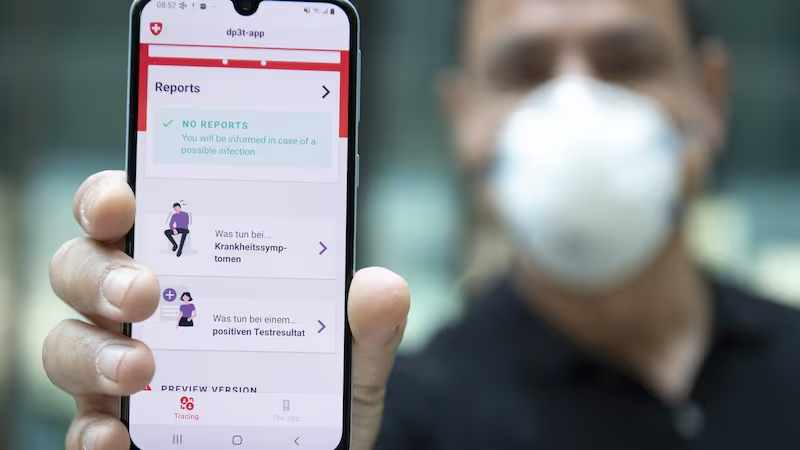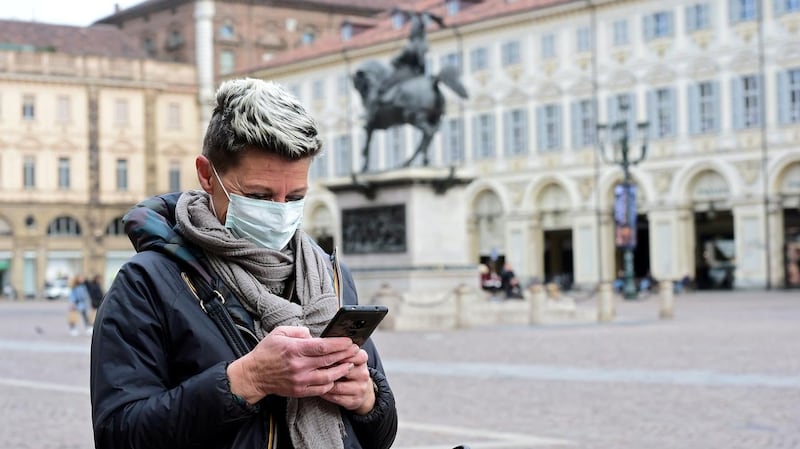The practice of contact tracing was pioneered by Asian countries before being adopted in Europe. It has been particularly effective in Japan and South Korea.
Japan has had just 1,520 deaths in a population of 127 million, one of the oldest in the world. South Korea, despite being the site of one of the worst initial outbreaks, has kept deaths to just 393 in a population of 52 million. Neither has imposed lockdowns.
Why is this the case? A key difference is in an understanding of what contact tracing is for.


In its guidelines, the European Centre for Disease Prevention and Control defines the purpose of contact tracing as being “to rapidly identify secondary cases that may arise after transmission from the primary known cases in order to intervene and interrupt further onward transmission”.
In practice, what European countries have understood this to mean is that when a sick person tests positive for Covid-19, the task of contact tracing is to find, warn, and isolate if necessary, anyone who could have been infected by the sick patient. “Contacts” are considered to be anyone who has spent time with the sick person from the 48 hours before they developed symptoms, up to 14 days after the symptoms first appeared.
In contrast, Japanese and South Korean contact tracing goes further back in time to establish where the sick person initially caught the virus. This has led to greater knowledge of what situations the virus spreads in – which differ from country to country due to cultural and social norms – and can allow for more precise policy responses to keep the virus under control.
Finding clusters
Japanese contact tracers discovered early in the pandemic that focusing on identifying to whom the sick person might have given the virus was "was not particularly effective", according to Dr Tomoya Saito, director of the Department of Health Crisis Management at Japan's National Institute of Public Health.
The tracers found that just a few “super-spreaders” tended to be responsible for most infections, meaning that tracking down the source of the initial infection would usually lead to discovering a “cluster” of cases.
Clusters tended to occur in crowded spaces with close contact and closed air circulation, and avoidance of these “three Cs” became the backbone of Japanese public health advice.
The meticulousness of the South Korean tracing system enabled it to track an outbreak in a warehouse back to a cluster in Seoul nightclubs. The tracers found that a nightclubber had given it to a student he was tutoring, who had passed it to a taxi-driver in a karaoke venue, who had passed it on via a birthday buffet to a warehouse employee. While sparing no effort to hunt down every Covid-19 case, neither Japan or South Korea have seen the disruption to everyday life the pandemic has caused in European countries.
Methods differ: Japanese contact tracing relies almost totally on the traditional, analogue methods of speaking to people to find out their contacts, whereas South Korean investigators famously use a suite of technological tools from smartphone apps to scrutinising footage from ubiquitous CCTV cameras.
But both countries benefitted from past experience of managing disease outbreaks. Japanese contact tracing is done through a network of 469 local public health centres with more than 25,000 staff, a system that was originally developed to combat another airborne disease: tuberculosis. South Korea has about 100 specialised “epidemiology investigators”, a force built up in the wake of the MERS outbreak there in 2015.
Let’s make an app
In the absence of such investigative resources, many European countries have focused on developing contact tracing apps for mobile phones to supplement their much more modest contact-tracing operations.
So far, take-up of such apps has been mixed. With nearly two million downloads so far, Ireland’s is one of the most successful. Germany’s Covid-19 tracking app has been operational since June and 18 million people have downloaded it – 15 per cent of smartphone users. Officials insist this is enough to be of use and about 10 per cent of new cases have been identified through the new app. But of those 10,000 people flagged, data shows only half used the app to warn their friends as intended.
One challenge is how to make the apps work when European citizens cross the borders, as many do daily for work or leisure.
A time-lag in tracing led to 159 people being put in isolation in Padua in Italy, due to cases among six groups of young people who returned from holidays in Croatia, Greece and Malta.
A new digital infrastructure that would make the apps of Germany, Denmark, Italy, Ireland, the Czech Republic and Latvia interoperable is currently being tested.
Many countries have built up human contact-tracing systems alongside the apps, but with mixed success.
European Muddle
Ever an outlier, Sweden shifted its contact-tracing approach this summer to largely rely on patients themselves to get in touch with those they had been in contact with to warn them they could have passed on Covid-19.
But elsewhere authorities have made serious efforts. The Catalan region in Spain hired hundreds of contact-tracers, but they were quickly overwhelmed by the rapidity of the spread of infection in Barcelona this summer. British efforts were mired in controversy after people hired as contract-tracers by Serco, the private company to which the work was outsourced, complained to media of being paid £10 an hour to attend online training that never took place and being advised to consult videos on YouTube to learn how to speak to the bereaved.
After experiencing one of Europe’s worst outbreaks, Italy has now become best in class in Europe at fighting the pandemic, so far avoiding the resurgence in cases seen around Europe. This is put down to the continued observance of strict voluntary distancing and hygienic practices by citizens who remember the harrowing daily death toll of the spring.
But state efforts are also extensive. On Wednesday this week alone, police checked 55,221 people and 7,027 businesses for compliance with pandemic regulations, handing out sanctions as they went. Airports and train stations offer testing. Some two-thirds of positive cases of Covid-19 are discovered through screening and contact-tracing rather than voluntary reporting due to symptoms in Italy, according to the National Health Institute.
Germany’s ample healthcare resources were credited with helping spare the country from the worst of the initial outbreak, keeping its Covid-19 deaths to 9,508 in a population of 83 million. Yet health matters such as contact-tracing are largely the competence of Germany’s 16 federal states and their communal health bodies, making for a patchwork.
Cat and mouse
“Mickey Mouse” and “Darth Vader” were some of the names contact tracers found on the visitor list of Hamburg’s Cat pub, where visitors must leave their details under local rules. When nine guests and four staff tested positive earlier this month, one in six contacts were fictitious, exposing the limits of Germany’s track-and-trace system.
"We have probably tracked everyone down now that evening but it was a warning shot," said Martin Helfrich, health spokesman for Hamburg's city-state government.
Despite getting an early start in mid-March, Germany has no centralised, standardised system for locating potential Covid-19 carriers. Once local health staff make contact with potential virus carriers, they direct people to a free local test, ask them to complete an online symptoms diary and call the person twice a day to check in.
The original goal was to have one contact tracer per 4,000 of population, but the system’s decentralised nature makes it impossible to check if this is the case.
Alone North Rhine-Westphalia (NRW), home to one in five Germans, has 54 different health bodies doing contact tracing. Local broadcaster WDR found large funding and personnel gaps, with only one third of NRW health bodies meeting official recommendations on track and testing. All states use public employees rather than private companies.
Like many, Hamburg drew on soldiers and other state employees to assist early on. Now they are recruiting doctors and other health officials as full-time contact tracers, employed by the city.
Asked by the Irish Times whether it would update its advice to focus on tracking down where positive cases had picked up the virus, the European Centre for Disease Prevention and Control (ECDC) said that its advice on testing released in September included a section on this.
“Investigating where cases have been infected should ideally be done as part of case investigation,” a spokeswoman said.
“ECDC will be including a specific section around this practice in the next update of the contact tracing guidance.”











